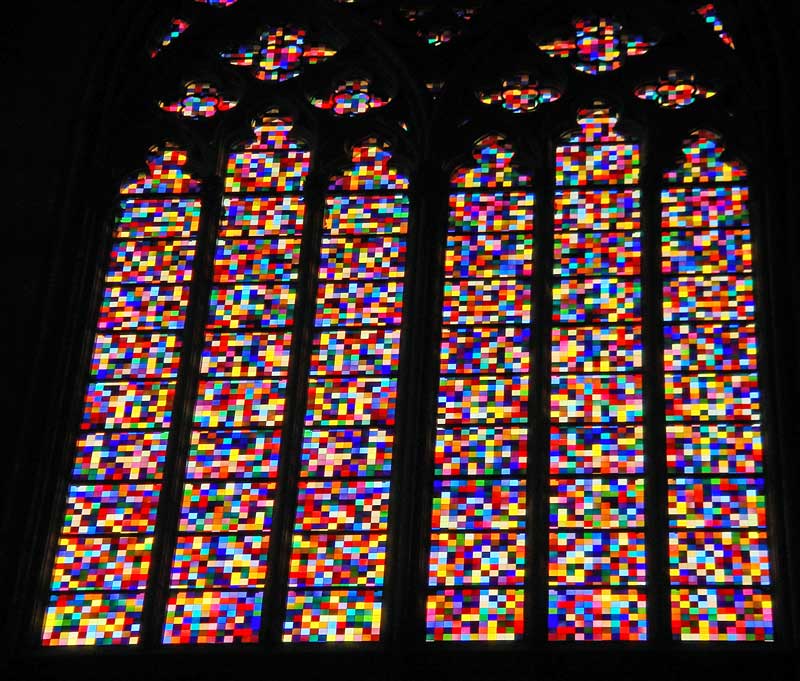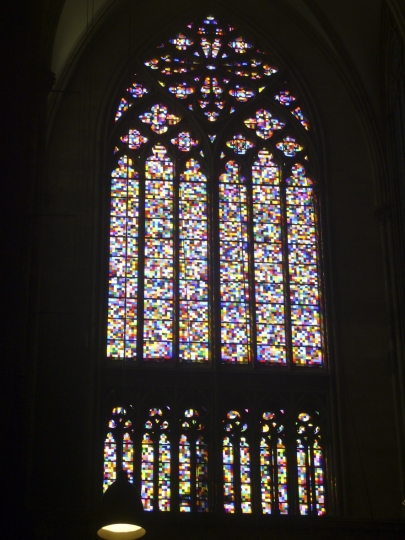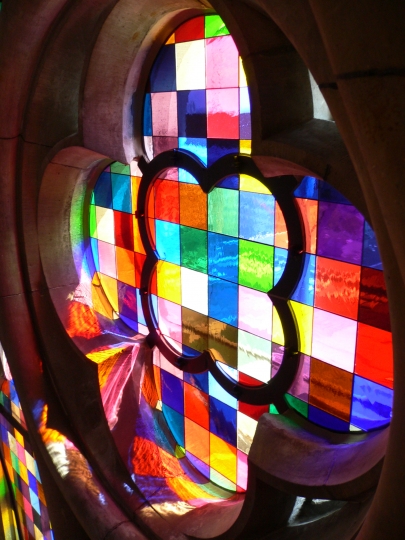We constantly hear complaints about contemporary sacral art in Poland. The reason? The priests with no artistic taste who hire mediocre artist.
Let us ask - what could arise if the 'opus' was created under the tutelage of the professional who cooperated with a noted artist? In Cologne Cathedral they decided to install some new transept windows to replace the old ones that had been destroyed by Allied bombing during the World War II. The architect in charge of the cathedral made a decision to commission it to a German artist Gerhard Richter - one of the most important contemporary artist.
- one of the most important contemporary artist.

Initially, the request was to design a figurative windows depicting ?Saints of the Twentieth Century?. Richter wasn't drawn to this literal and out-of-date idea of a stained glass window. Instead he suggested an abstract, geometric composition consisting of thousands of small colored 'pixels'. The work consisted of 11 500 pieces of glass in 72 colors. Tiny glass squares were randomly arranged by the computer.
 fot.Derix
fot.Derix
The archbishop of the cathedral, Joachim Cardinal Meisner, who had preferred a figurative depiction of Catholic martyrs for the window, did not attend the unveiling. He found Richter's abstract design better suited to a mosque or a prayer house than a cathedral. The critique took this innovative project in defense. Cardinal's statements were compared to the Nazi view that had stigmatized modern art as degenerated. Even the term "Entartet" he used to describe Richter's work derives from their ideological language. Finally the controversial windows were widely accepted through various argumentations: as a deconstruction of abstract art, as a reference to cistercian non-figurative decor and finally as a splendid, great looking windows.
 fot. Derix
fot. Derix
Well, we also cannot deny the last point. Executed with the finest glass, by one of the best German glass studios (Derix ). It definitely can please the eye.
). It definitely can please the eye.
However, in the sacred space of the cathedral, among the signs of faith and the reminiscences of tradition it will stay a 'foreign body' and a testimony of the secular pride of the dawn of the 21st Century.
 - one of the most important contemporary artist.
- one of the most important contemporary artist.




